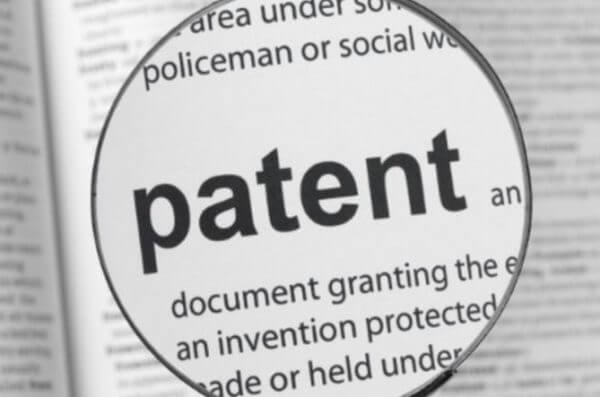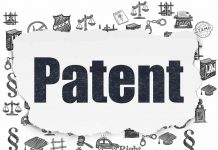This article is written by Gurpreet Singh, from the Faculty of Law, Delhi University. This piece takes you through the basics of patent law and widening of patent law through the case of Allani Ferid v Assistant Controller of Patents and Designs.
Introduction
What comes to your mind when you hear the Name Elon Musk? Surely it is not XAeA-12! It must be an entrepreneur, celebrity, Successful, an inventor. Ah! If one is an inventor, their biggest concern is that their inventions would be copied by others, So to protect innovation, a branch of law developed going by the name of patent Law. This piece takes you through the basics of patent law and its changing horizons in India due to a decision rendered in Allani Ferid v. Assistant Controller of Patents and Designs.
What are Patents?
Patents are basically the monopoly rights granted to the inventor to reap the benefits of their own innovation. For example, You created the light bulb! You would want it to attribute it to your name and reap the benefits of your hard labour. You would prefer to be known for the invention that changed the world. So, to encourage individuals to invest or bring a change in the way homo sapiens work, patents are granted. To warden, the protection of law certain conditions need to be fulfilled for the grant of Patent that is as follows
- Novelty – First and foremost requirement of patents to be granted that invention must not already be existence. In simple words, it should offer something that is not already available.
- Upgradation -Mere up-gradation to the previous invention is not patentable. Mere technological changes are not patentable. There should be a major improvement over the previous invention to make it patentable. ie Innovations are also patentable provided there are significant improvements.
- Adds Value -An invention that does not add value to human life or the industry is not patentable.
History of patents in India
In the late part of the 19th century with the industrial revolution, inventions in the field of machinery, apparatuses were increasing and inventors demanded that their work should be protected. To safeguard the inventions, British colonizers enacted the Indian Patents and Designs Act,1911. With the due passage of time, substantial changes in the social structure, political and economic sphere in the country demanded reforms. So to address the concerns, the Government appointed the Patents Enquiry committee in 1948 to review the working of Indian Patent law.
The committee submitted its report in 1950. A bill by the name of Patents Bill,1953 was introduced in the parliament, but unfortunately lapsed due to the dissolution of the First Lok sabha. In 1957, the task to review patent law was handed to Justice N.Rajagopala Ayyanagar. The Judge submitted his report on the subject matter in September 1959. After that, a patent bill was introduced in the parliament in 1965 based on the recommendations of the judge. But it also eventually lapsed. Then finally on 19th September 1970, a patents bill was passed in the parliament to amend and consolidate the law relating to patents. The Act was later amended in 2005 to incorporate changes that were the need of the hour at that point in time meeting the requirements of technology.
Unpatentable material
Section 3 and 4 of the Indian Patent Act, 1970 provides a list of things that cannot be patented that is as follows:
- An invention that is contrary to all the well established natural laws.
- An invention that could be against public order or morality.
- Amere discovery of scientific principle or formulation of an abstract theory without proof.
- A substance obtained by admixture.
- The mere arrangement of devices or rearrangement of devices.
- A method concerning agriculture and horticulture.
- Any process that cures humans and animals of diseases.
- Plants and animals as a collective are not patentable.
- A literary, dramatic, musical, or artistic work.
- A method of playing a game.
- Presentation of information.
- Topography of integrated circuits.
- An invention which in effect is basically traditional knowledge.
- An invention related to atomic energy.
Process grant of a patent
- Present your idea or invention in Writing – Depending on when are you applying your invention (if ripped) or an idea in progress, they should be presented in writing containing all details such as the field of invention and how does it work and how will it be applicable in the industry.
- Pictorial Representation -It is essential to present your invention in pictorial form for a better understanding of the invention, so that decision about the grant of a patent can be taken judiciously.
- Eligibility of Grant of Patent – Patents are not granted on every invention. It is essential to make sure that your invention falls under the category of inventions that is patentable.
- Credibility Criteria – Next it is important to make sure that your invention meets the criteria of novelty, applicability, and up-gradation required for grant of patent.
- File Patent Application -Next step is to file for a grant of a patent that depends upon the stage of development one is currently standing at. If one is at the preliminary stage of development, one can apply for a provisional patent, and that grants time to the inventor to present invention in the next 12 months, If one is at the final stage of development then a final application for the grant should be filed.
- Publication – Once full details are being provided, it tackles 18 months from the date of filing for publication. If you wish to undo the 18 month waiting period, you have to pay the prescribed fees.
- Examination of the Patent – The patent application is scrutinized and it is made sure that prior art available on the subject matter is not similar to that of the prosecution. The process of analyzing everything before the grant of a patent is known as patent prosecution.
- Respond to the objections – If any objections are received after the examination of the patent, it the duty of the applicant to allay those objections in consultation with the patent agent.
- Objection Clearance – The patent officer and the applicant ensure that all objections raised are cleared and the applicant has had a fair chance to prove his point.
- Grant of Patent – When all requirements are met, the application is sent to the grant and when the patent is being granted, it is published in the patent journal.
Allani Ferid v. Assistant Controller of Patents
Brief overview
The Petitioners applied for a patent regarding an improvement in the search mechanisms via computers and it was rejected by the patent board invoking Section 3(k) of the Patents Act. It was contended by the petitioners that improvement saved data and provided better search results to the consumers having an effect of improvement over the previous technology.
The law in picture
Section 3(k) of the Patents Act prohibited the grant of patents regarding computer-related inventions until the late 1990’s when a parliamentary committee recommended certain amendments and permitted patents in respect of computer-related inventions. The recommendations saw the light of the day when the Act was amended in 2002 by the parliament. The amended section 3(k) Patent Act reads as follows
“a mathematical or business method or a computer program per se or algorithm”. It was clarified by the Committee that the words per se are being added to the provision to grant patents to computer-related inventions. The committee also remarked that “Across the world, patent offices have tested patent applications in this field of innovation, on the fulcrum of `technical effect‟ and “technical contribution‟. If the invention demonstrates a “technical effect‟ or a “technical contribution‟ it is patentable even though it may be based on a computer program”. With these remarks, the committee was of the opinion that Indian law is now on par with European Union law, which will result in computer-related inventions will be provided patents if they produce a technical effect.
Guidelines Issued in 2013
A set of guidelines were issued in 2013, revised in 2016 and then in `,due to growing confusion over the patentability of computer-related inventions. The Guidelines provided that the following can be construed as having a technical effect:
- Higher speed;
- Reduced hard-disk access time;
- More economical use of memory;
- More efficient database search strategy;
- More effective data compression techniques;
- Improved user interface;
- Better control of robotic arm;
- Improves reception/transmission of a radio signal.
Precedents Available
- Telefonaktiebolaget Lm Ericsson vs. Intex Technologies – The Delhi High Court, in this case, remarked that “prima facie it can be understood that any invention which has any technical effect or can prove technical contribution are patentable in India”.
- Alice Corp v CLS Bank International – The Court held that “patents cannot just be given to an abstract idea for the sole reason that it was done on a computer, but if it induces technical functioning or improvement in the performance of a computer then there must not be any restrictions on its patentability”.
Brief facts of the case
- The Invention took birth when the Internet was just starting out in 1999.
- A Search engine searched the web and provided links to consumers, from which they could select the appropriate web page of their choice.
- The Invention proposed to conduct localized search until it is discovered what the consumer is looking for and then invoke the internet and directly refer the consumer to a single webpage saving data network and time of the consumers (For example You open google and conduct a web search regarding motorbikes, Google will provide you with 10 links regarding motorbikes, you have to navigate through each web page before you find what you looking for. What this invention proposed to do was that once a consumer searches about motorbikes, hold to send the request to the internet and conduct localized search and reach to a point where it is known that consumer is looking for honda motorbikes below one lakhs near the vicinity, then the internet would be invoked and the webpage would be presented before the consumer)
- The application was rejected in filed in the year 2002 and rejected in 2004 and 2005 by the patent office.
- The Applicant filed a writ petition in the Delhi High Court challenging the rejection. The high court ordered a re-examination of the order passed by the patent office reinstating that the patent application cannot be rejected mechanically merely because it is related to computers.
- The Re-examination also went against the applicants.
- The order of the patent office was challenged in the Intellectual property Appellate Board.
The IPAB Order
- The IPAB held that the patent office has been callous in their functioning by ignoring the order of the High Court which categorically stated that the patent application should be examined as a whole and tested on technical effect or advancement even if it is related to a computer program.
- The IPAB held that the. If the invention demonstrates a “technical effect” or a “technical contribution”, it is patentable even though it may be based on a computer program.
- The IPAB held that the invention under controversy achieves technical advancement in the following way; Internet bandwidth is utilized only once at the time of depicting the final web page to the consumer. This in effect saves a lot of time and effort for the consumer.
- The IPAB held that the technical advancement is covered under the guidelines issued for computer-related inventions and would fall under the head of Increased speed, More economical use of memory, and more efficient database search strategy.
- The present invention reduced the consumption of data bandwidth by filtering out the needs and requirements of users by conducting a localized search. After conducting localized search request is sent to the internet once for providing accurate results saving time and effort for the user, thus resulting in having a technical advantage over the prior art.
Conclusion
With fast pacing technology and the advent of modern life. Inventions are about to take place in the computer realm. With Artificial intelligence, blockchain technologies staring at us in the near future, It is high time for our Courts to take a definitive stance regarding the essence of technical advancement so that inventions can be promoted with an assurance that their rights over computer-related inventions would be protected.
References
- https://www.ipwatchdog.com/2020/07/25/curtain-call-computer-related-inventions-india-analysis-ferid-allani-case/id=123483/
- https://blog.ipleaders.in/what-is-a-patent-law-in-india/#:~:text=Firstly%2C%20the%20invention%20must%20be,the%20patent%20to%20the%20inventor.
Students of Lawsikho courses regularly produce writing assignments and work on practical exercises as a part of their coursework and develop themselves in real-life practical skills.
LawSikho has created a telegram group for exchanging legal knowledge, referrals, and various opportunities. You can click on this link and join:
 Serato DJ Crack 2025Serato DJ PRO Crack
Serato DJ Crack 2025Serato DJ PRO Crack











 Allow notifications
Allow notifications



